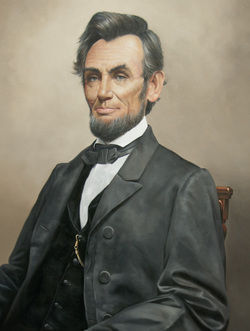Commissioned Portraits

The fine art of the painted portrait
The ability to draw or paint a portrait is a truly unique genre in the world of Art. It is a task that requires the skill to not only draw and paint the anatomy of the human head accurately, but also to create a true likeness of an individual while capturing that person’s unique character and spirit.
As a portrait artist, my task is to do just that for every client who gives me a portrait commission: to accurately capture the likeness of the subject along with a sense of the subject’s personality. When creating a portrait, I do not see “beauty” or “unattractiveness” in the faces of people I am commissioned to paint. What I do see is the uniqueness possessed by every human being through their physical characteristics and their personality. The elements are always the same: eyes, a nose, a mouth and ears, but always unique in the assemblage. Conveying that on canvas is a challenge and enjoyment that I experience with every portrait I create.
The process of creating the portrait
When I am commissioned to paint a portrait, my first meeting with the client involves the discussion of several key aspects that will set the project off in the right direction. The first step is for the client to answer several questions that determine the intention of the portrait. Is it a private gift for a family member or is it a public commemorative painting? Will the portrait hang in a domestic environment or in a public setting?
Common occurrences are commissions that are intended as gifts so the person who is being painted is not always aware of the portrait being created for them. With commemorative portraits, sometimes the subject is deceased. In both cases, the client will need to provide as many reference photographs as possible and I will create the portrait from those sources. Whenever possible, I do prefer to photograph the subject in my studio to create the best pose and expression. This also gives me the opportunity to interact with the subject and get a sense of the subject’s personality.
Other key elements to the portrait are wardrobe and environment. Is the portrait formal or casual in pose, wardrobe and setting? Does the subject wish to be in a seated or standing pose? What environment is desired?
For example, presented above is a portrait of Abraham Lincoln. It is a 36 x 48 life-size portrait. It is a full body, formal seated pose, showing both hands and a chair; all are contained in an austere setting that brings the viewer’s attention right to Lincoln’s face. The size of the portrait is also quite important to the intention. Discussing with the client where the portrait will hang usually decides the appropriate size.
The ability to draw or paint a portrait is a truly unique genre in the world of Art. It is a task that requires the skill to not only draw and paint the anatomy of the human head accurately, but also to create a true likeness of an individual while capturing that person’s unique character and spirit.
As a portrait artist, my task is to do just that for every client who gives me a portrait commission: to accurately capture the likeness of the subject along with a sense of the subject’s personality. When creating a portrait, I do not see “beauty” or “unattractiveness” in the faces of people I am commissioned to paint. What I do see is the uniqueness possessed by every human being through their physical characteristics and their personality. The elements are always the same: eyes, a nose, a mouth and ears, but always unique in the assemblage. Conveying that on canvas is a challenge and enjoyment that I experience with every portrait I create.
The process of creating the portrait
When I am commissioned to paint a portrait, my first meeting with the client involves the discussion of several key aspects that will set the project off in the right direction. The first step is for the client to answer several questions that determine the intention of the portrait. Is it a private gift for a family member or is it a public commemorative painting? Will the portrait hang in a domestic environment or in a public setting?
Common occurrences are commissions that are intended as gifts so the person who is being painted is not always aware of the portrait being created for them. With commemorative portraits, sometimes the subject is deceased. In both cases, the client will need to provide as many reference photographs as possible and I will create the portrait from those sources. Whenever possible, I do prefer to photograph the subject in my studio to create the best pose and expression. This also gives me the opportunity to interact with the subject and get a sense of the subject’s personality.
Other key elements to the portrait are wardrobe and environment. Is the portrait formal or casual in pose, wardrobe and setting? Does the subject wish to be in a seated or standing pose? What environment is desired?
For example, presented above is a portrait of Abraham Lincoln. It is a 36 x 48 life-size portrait. It is a full body, formal seated pose, showing both hands and a chair; all are contained in an austere setting that brings the viewer’s attention right to Lincoln’s face. The size of the portrait is also quite important to the intention. Discussing with the client where the portrait will hang usually decides the appropriate size.
